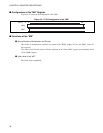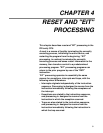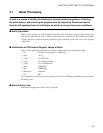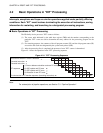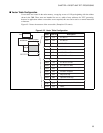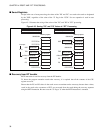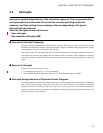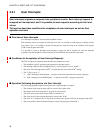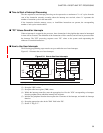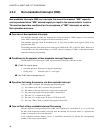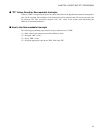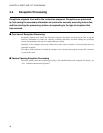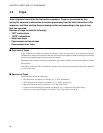
37
CHAPTER 4 RESET AND "EIT" PROCESSING
4.3 Interrupts
Interrupts originate independently of the instruction sequence. They are processed by
saving the necessary information to resume the currently executing instruction
sequence, and then starting the processing routine corresponding to the type of
interrupt that has occurred.
There are two types of interrupt sources.
• User interrupts
• Non-maskable interrupts (NMI)
■ Overview of Interrupt Processing
Interrupts originate independently of the instruction sequence. They are processed by saving the necessary
information to resume the currently executing instruction sequence, and then starting the processing routine
corresponding to the type of interrupt that has occurred.
Instructions loaded and executing in the CPU before the interrupt will be executed to completion, however,
any instructions loaded in the pipeline after the interrupt will be canceled. After completion of interrupt
processing, therefore, execution will return to the next instruction following the generation of the interrupt
signal.
■ Sources of Interrupts
There are two types of interrupt sources.
• User interrupts (See Section "4.3.1 User Interrupts")
• Non-maskable interrupts (NMI) (See Section "4.3.2 Non-maskable Interrupts (NMI)")
■ Interrupts during Execution of Stepwise Division Programs
To enable resumption of processing when interrupts occur during stepwise division programs, intermediate
data is placed in the program status (PS), and saved to the stack. Therefore, if the interrupt processing
program overwrites the contents of the "PS" data in the stack, the processor will resume executing the
stepwise division instruction following the completion of interrupt processing, however the results of the
division calculation will be incorrect.




